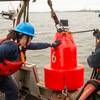A proposal by China to mandate specific ISO test methods for sulphur, building on a proposal made by IBIA to the IMO earlier this year, has won support to be further considered as the IMO works on measures to ensure uniform implementation of the 0.50% sulphur limit.
China submitted its proposal to the 72nd session of the IMO’s Marine Environment Protection Committee (MEPC 72) last week, proposing that the test method of sulphur content of fuel oil should be made mandatory to avoid disputes, and that the methods should be ISO 8754:2003 or ISO 14596:2007.
China’s submission further noted: “ Document PPR 5/13/9 (IBIA) proposes adding the definition of sulphur content in regulation 2 of MARPOL Annex VI to ensure the analysis of sulphur content is done in a uniform way and the test method shall be the latest edition of ISO 8754 as mandatory. China supports the proposal in document PPR 5/13/9 (IBIA) to add a definition of sulphur content in order to unify the test method for sulphur content.”
However, while IBIA had proposed the use of just one test method in the definition, namely ISO 8754, China’s proposal argued that because the test range of ISO 8754 only varies from 0.03% to 5.00%, it does not cover situations where ships receive and use fuel oil with a sulphur content lower than 0.03%. China therefore proposed adding ISO 14596 which covers fuels in the 0.001% to 2.50% sulphur range.
Commenting on China’s paper in plenary at MEPC 72, IBIA said: “We are very grateful to China for their proposal in MEPC 72/5/7 and it is clear to us that we are seeking the same outcome: namely for authorities in all jurisdictions to use the same methods when testing bunker fuel in order to verify compliance with the relevant MARPOL sulphur limits. This would help achieve uniformity in enforcement across the board when verifying the sulphur content of different kinds of fuel oil samples.
As noted by China, the test range of ISO 8754 covers sulphur content ranging from 0.030% to 5.00%. In fact, this test method can record lower values but the test reporting protocol nevertheless stipulates that results must be reported within the defined range.
It is indeed the case, as China has noted, that some fuels supplied to ships may have sulphur content below 0.030% and that the ISO 14596 test method, which covers the range 0.001% to 2.50% sulphur would be needed to more accurately report the sulphur content of such fuels.











